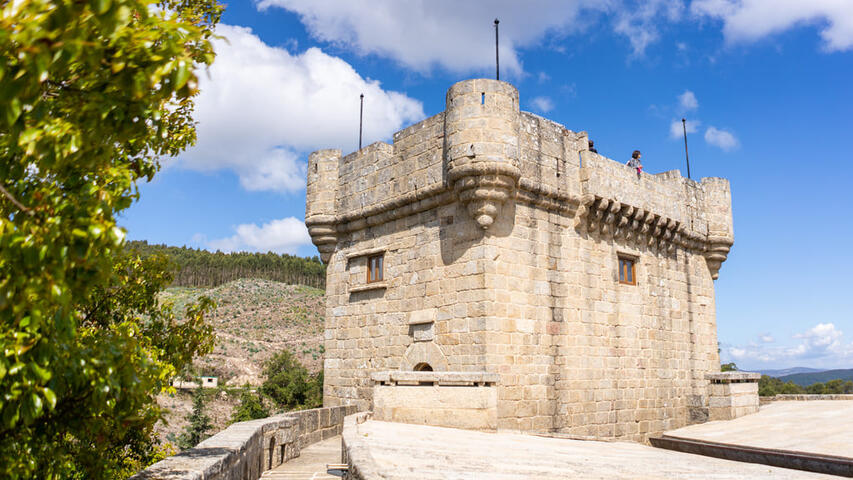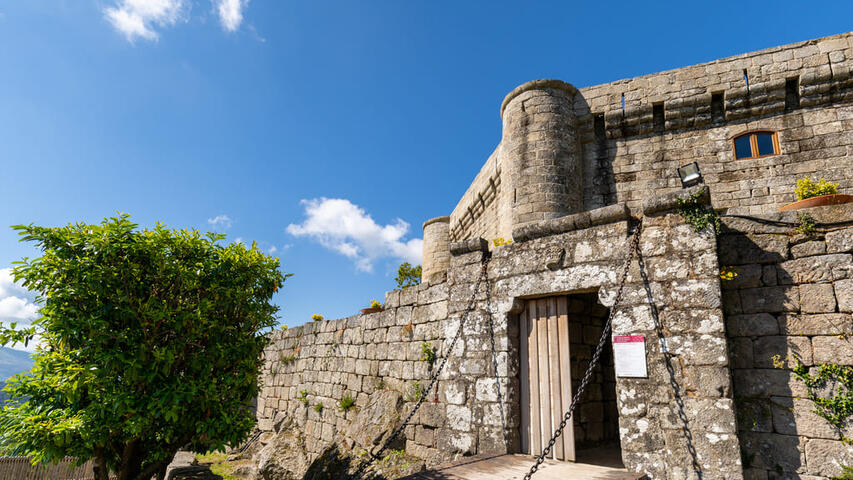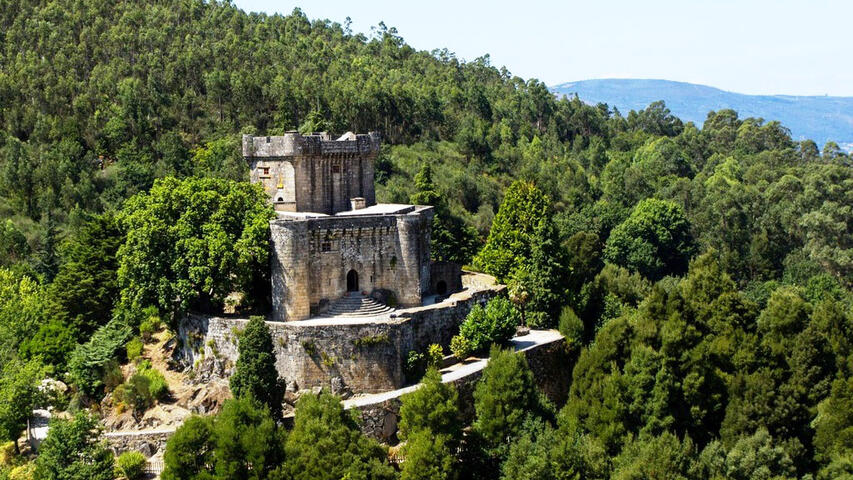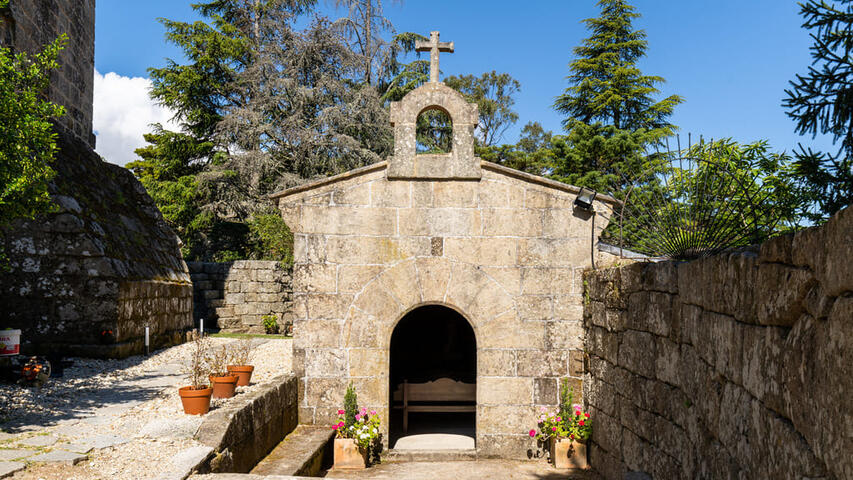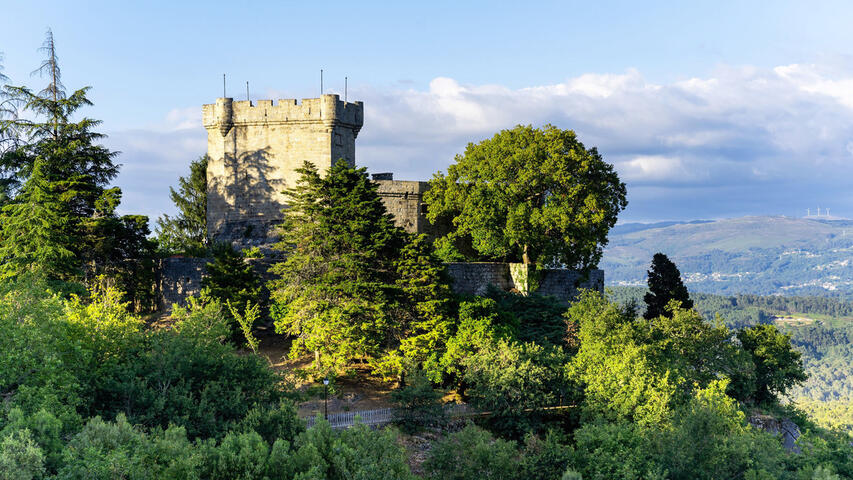Sobroso Castle
From October 1, 2025, it will remain closed for renovation until further notice.
The scene of great battles and surrounded by a unique landscape, Sobroso Castle is one of the best examples of the fortified heritage of the province of Pontevedra. Located on the top of a hill in Vilasobroso (Mondariz), more than 300 metres above sea level, this impressive medieval fortress is striking both for its beauty and its perfect state of conservation.
Sobroso Castle is guarded by a large forest park in which native trees coexist with other specimens, offering visitors a beautiful botanical path to enjoy a stroll, contemplate its extraordinary natural beauty and a fantastic panoramic view.
Built in the 12th century, the fortress consists of a 140-metre outer wall, a rectangular tower and a two-storey residential area, the upper part of which was reserved for the nobility and the lower part for the guards. The Provincial Council of Pontevedra, in charge of the management and maintenance of the Sobroso castle, carried out an innovative musealisation of its interior in order to enhance its value and reinforce it as a heritage and tourist attraction. Visitors can learn about its history, the importance it had in the territory during the Middle Ages and related characters through audiovisuals, magic boxes, videomapping, light and sound games in the different rooms. Tickets to visit the castle and its museum are available on the website of the fortress.
Importantfigures in the history of the province of Pontevedra were involved in various power struggles. In 1117, Doña Urraca was besieged in the fortress by her sister Doña Teresa and the supporters of her son Alfonso, the future first king of Portugal, although, according to legend, Doña Urraca managed to escape through underground passages. Later, on behalf of the king, Pelayo Muniz would inhabit the castle, and after the arrival of the Catholic Monarchs, it would become the residence of great noble families such as the Sobroso, Sarmiento and Sotomayor families, the latter two of which were in conflict over the ownership of the fortress.

Its privileged location near the river Minho, the natural boundary with Portugal, allowed control of communications between the interior and the sea of the bishopric of Tui, in an enclave where nature and heritage coexist in perfect harmony.
